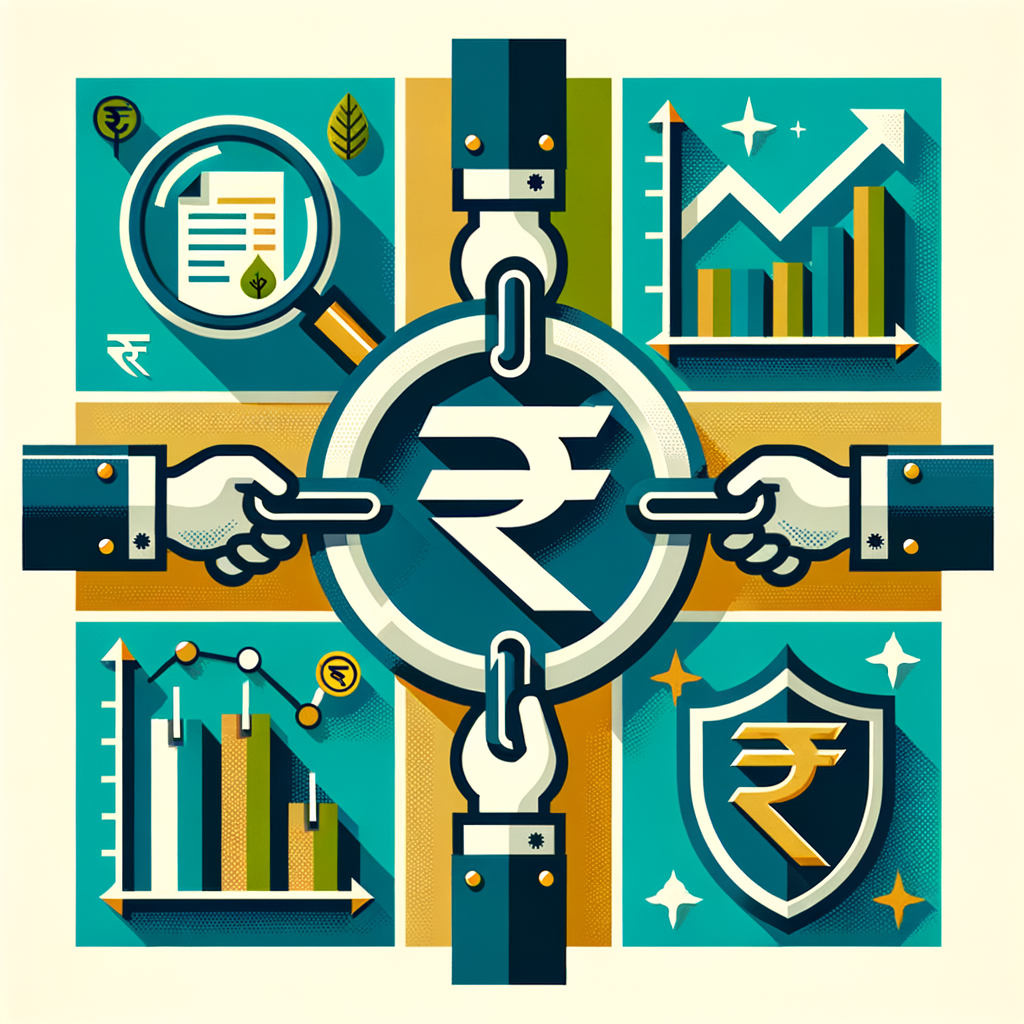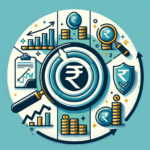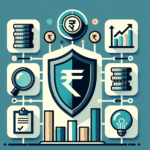How to Get Out of Debt Without Filing for Bankruptcy in India
The weight of mounting debt can feel suffocating, a constant source of stress for both hardworking salaried professionals and ambitious entrepreneurs across India, who should be aware of the Top 10 Financial Mistakes Small Businesses Make that can lead to such situations. Juggling EMIs, credit card bills, and business loans can quickly become overwhelming, making it seem like there’s no way out. However, it’s crucial to understand that this is a solvable problem. With a clear plan and the right approach, you can systematically get out of debt and regain control of your financial future. This comprehensive guide provides actionable steps and proven debt management strategies India offers, empowering you to navigate your way back to financial stability without resorting to the drastic measure of bankruptcy. The central theme is simple: a proactive and strategic approach is your most powerful tool for achieving financial freedom.
First Step to Get Out of Debt: A Clear Financial Assessment
Before you can map out a route to your destination, you need to know exactly where you are starting from. The first and most critical step in learning how to manage debt in India is to conduct a thorough and honest assessment of your financial situation. You cannot fight an enemy you don’t fully understand. This means taking a deep breath and looking at the numbers—all of them—without fear or avoidance. This process will create the clear picture you need to build an effective repayment plan.
Create a Detailed Debt Inventory
Your first task is to create a master list of every single rupee you owe. This exercise isn’t meant to discourage you; it’s designed to empower you with knowledge.
Actionable Advice: Grab a notebook, open a spreadsheet (like Google Sheets), or use a personal finance app. List every single debt you have.
Details to Include for Each Debt:
- Creditor Name: Who do you owe money to? (e.g., HDFC Bank, SBI Cards, Bajaj Finserv, a local lender).
- Type of Debt: Is it a credit card, personal loan, home loan, car loan, or business loan?
- Total Outstanding Amount: The exact principal amount you still have to pay back.
- Interest Rate (APR): This is one of the most important figures. Find the annual percentage rate for each loan.
- Minimum Monthly Payment (EMI): The minimum amount you are required to pay each month.
- Due Date: The date your payment is due to avoid late fees.
Pro Tip: Organizing this information in a spreadsheet will allow you to sort your debts by amount or interest rate, which will be incredibly useful for the strategies we discuss later.
Calculate Your Debt-to-Income (DTI) Ratio
Once you know what you owe, the next step is to understand how your debt compares to your income. This is measured by the Debt-to-Income (DTI) ratio, a critical health metric for your personal finances that lenders use to assess your borrowing risk.
Explanation: Your DTI ratio is the percentage of your gross monthly income that goes towards paying your monthly debt obligations.
The Formula:
DTI = (Total Monthly Debt Payments / Gross Monthly Income) x 100
For example, if your total monthly EMIs and credit card minimums are ₹40,000 and your gross monthly salary is ₹1,00,000, your DTI is (40,000 / 1,00,000) x 100 = 40%.
Context:
- Below 36%: Generally considered healthy and manageable.
- 37% to 43%: Manageable, but indicates some financial pressure.
- Above 43%: A sign of significant financial stress. Lenders in India are often hesitant to offer new loans to individuals in this range.
Knowing your DTI gives you a clear, objective measure of your debt burden and a benchmark to work towards improving.
Proven Debt Management Strategies India Swears By
With a clear picture of your financial landscape, you can now choose a strategy to attack your debt. There isn’t a single “best” method; the right one for you depends on your personality and financial situation. These proven debt management strategies India has seen success with provide clear, actionable paths. They are some of the most effective personal finance tips for Indians looking to become debt-free.
The Debt Snowball Method (For Quick Wins)
The Debt Snowball method focuses on building momentum and motivation. It’s less about math and more about psychology.
How it Works:
- List all your debts from the smallest outstanding balance to the largest, regardless of their interest rates.
- Make the minimum required payment on all your debts.
- Allocate any extra money you can find in your budget towards paying off the smallest debt on your list as aggressively as possible.
- Once the smallest debt is completely paid off, you “roll” the entire amount you were paying on it (the minimum plus the extra) onto the next-smallest debt.
- Repeat this process. As each debt is eliminated, the “snowball” of money you’re throwing at the next one gets bigger and bigger, accelerating your progress.
Why it Works: The power of the Debt Snowball lies in the quick, motivating wins. Paying off a full account, even a small one, provides a powerful psychological boost that keeps you committed to your plan for the long haul.
The Debt Avalanche Method (To Save Money)
The Debt Avalanche method is the most efficient strategy from a purely mathematical standpoint, designed to save you the most money in interest payments over time.
How it Works:
- List all your debts from the highest interest rate to the lowest, regardless of the balance.
- Make the minimum required payment on all your debts.
- Put every extra rupee you have towards the debt with the highest interest rate.
- Once that high-interest debt is paid off, you take the entire payment amount (minimum plus extra) and apply it to the debt with the next-highest interest rate.
- Continue this process until all your debts are cleared.
Why it Works: High-interest debt, like credit card debt, grows the fastest. By targeting it first, you minimize the total amount of interest you’ll pay over the life of your loans, which is the most efficient way to get out of debt.
For a deeper analysis, explore our guide: Debt Snowball vs. Debt Avalanche: Which Strategy Is Best for You?
| Feature | Debt Snowball Method | Debt Avalanche Method |
|---|---|---|
| Strategy | Pay off debts from smallest to largest balance. | Pay off debts from highest to lowest interest rate. |
| Best For | Those who need quick wins and motivation to stay on track. | Those who are disciplined and want to save the most money on interest. |
| Primary Pro | High psychological motivation from early successes. | Mathematically fastest and cheapest way to eliminate debt. |
| Primary Con | May cost more in total interest payments over time. | May take longer to pay off the first debt, requiring more patience. |
Exploring Alternative Debt Solutions India Offers
Sometimes, personal strategies like the Snowball or Avalanche methods aren’t enough, especially if your DTI is very high and you’re struggling to make even the minimum payments. In such cases, exploring professional and structural debt relief options India has available can be a crucial step. These are powerful tools for getting out of debt without bankruptcy India, providing a structured path forward when you feel overwhelmed.
Option 1: Debt Consolidation
Debt consolidation is the process of taking out a single, new loan to pay off multiple existing debts. The goal is to simplify your payments into one monthly EMI and, ideally, secure a lower overall interest rate than what you were paying on your various debts (especially high-interest credit cards).
How it Works in India:
- Personal Loan: You can apply for a personal loan from a bank or an NBFC (Non-Banking Financial Company). If approved, you use the lump sum to pay off all your credit card balances and other smaller loans. You are then left with a single personal loan EMI to manage, often over a term of 3-5 years.
- Balance Transfer on Credit Cards: Some banks offer “balance transfer” credit cards that come with a 0% or very low introductory interest rate for a specific period (e.g., 3-6 months). You can transfer your outstanding balances from multiple high-interest cards to this new card, allowing you to pay down the principal without it accruing heavy interest.
Pros:
- Simplifies finances to a single monthly payment.
- Can significantly lower your total interest rate.
- Provides a fixed repayment schedule.
Cons:
- Requires a good CIBIL score to qualify for a low-interest loan.
- May come with processing fees.
- Can extend the repayment term, potentially leading to more interest paid over the long run if the new rate isn’t low enough.
Option 2: Debt Settlement or Negotiation
Debt settlement is a more aggressive strategy where you or a representative negotiates with your creditors to pay a lump-sum amount that is less than the total you owe. The creditor agrees to forgive the remaining balance.
Important Caveat: This should be considered a last resort before bankruptcy. While it is one of the more direct alternative debt solutions India provides, it has serious consequences. When you settle a debt, your CIBIL report will show “Settled” status for that account, which is viewed very negatively by lenders for up to 7 years. It tells future creditors that you did not fulfill your original obligation in full, making it difficult to get new loans or credit cards.
Option 3: Professional Credit Counselling
If you feel unable to manage the process alone, seeking help from a professional is a wise move. Reputable credit counselling agencies or SEBI-registered financial advisors can provide expert guidance.
What they do:
- Budgeting: They help you create a realistic and sustainable household budget to free up cash for debt repayment.
- Negotiation: They can negotiate with your creditors on your behalf for lower interest rates or more manageable payment plans.
- Debt Management Plan (DMP): They can formulate a formal DMP where you make a single monthly payment to the counselling agency, which then distributes the funds to your creditors according to the agreed-upon plan.
Actionable Advice: Ensure you are working with a reputable agency. Check for credentials and reviews before committing to any service.
Conclusion: Your Path to Becoming Debt-Free
The journey to get out of debt is a marathon, not a sprint. It demands honesty, discipline, and a solid plan. The path to financial freedom begins with a thorough assessment of your situation, followed by choosing a repayment strategy like the Debt Snowball or Debt Avalanche that aligns with your financial personality. If your situation feels unmanageable, don’t hesitate to explore professional alternative debt solutions India offers, such as consolidation or credit counselling. Remember, financial freedom is an achievable goal, and with the right strategy, you can get there without taking the drastic step of filing for bankruptcy.
Feeling overwhelmed by debt? The financial experts at TaxRobo Online CA Consultation Service can help you create a personalized plan to manage your finances and explore the best debt relief options for your situation. Contact us today for a consultation.
Common Questions About Getting Out of Debt in India
Will settling my debt for a lower amount hurt my CIBIL score?
Yes, absolutely. A “settled” account on your credit report is a significant negative mark. Lenders view it as a failure to meet your original credit obligation. While it is better than a “written-off” or defaulted account, it will lower your CIBIL score substantially and can impact your ability to get credit for up to seven years. It is wise to learn How to Track Your Credit History Using Your PAN Card Via CIBIL to monitor the impact.
What is the difference between debt consolidation and debt settlement?
Debt consolidation is a financial tool where you pay your debts in full by taking out a new, single loan. It simplifies payments and can lower your interest rate without directly harming your credit score (other than a temporary dip from the new loan inquiry). Debt settlement is a negotiation process where you pay less than the total amount you owe, which severely damages your credit score.
How long will it take to get out of debt?
This depends entirely on three factors: the total amount of debt you have, your income, and how aggressively you can make extra payments towards the principal. Once you have your debt inventory and a chosen strategy, you can use an online debt repayment calculator to get a good estimate of your debt-free date.
Are there any specific government schemes for debt relief in India?
While there is no single, overarching government scheme for personal debt relief, specific measures are often introduced during national crises. For example, the RBI announced loan moratoriums during the COVID-19 pandemic to provide temporary relief. For small business owners, various schemes under the MSME ministry can offer financial assistance, credit guarantees, and support. It is advisable for entrepreneurs to check the official Udyam MSME portal for any relevant schemes that may apply to their situation.




Love this blog! The content is always so relevant and insightful, keep up the great work!
This blog is a great resource for anyone looking to live a more mindful and intentional life Thank you for providing valuable advice and tips
Your writing is so inspiring and motivating I always leave your blog feeling more determined and resilient
Your blog is a constant source of wisdom and positivity Thank you for being a ray of light in a sometimes dark world
This post is jam-packed with valuable information and I appreciate how well-organized and easy to follow it is Great job!
Dear Mr. Sandoval,
Thank you for your very kind feedback. I’m delighted to hear that you found the post valuable and, just as importantly, that it was well-organized and easy to follow.
Your point about clarity is something I consider fundamental. In the world of finance and taxation, complexity can often be a barrier to action. My primary goal is always to distill these intricate subjects into a clear and accessible format so that readers feel empowered to make informed decisions. Knowing that the structure and organization resonated with you is fantastic to hear.
Thank you again for your valuable engagement.
Best regards,
Maniraj Anantham
This is such an important and often overlooked topic Thank you for bringing attention to it and offering valuable advice
Dear Mr. Hines,
Thank you for your insightful comment. You’ve perfectly captured the reason I wanted to address this subject—it’s one of those crucial topics that is often overlooked in favor of more prominent financial news.
In my experience, true financial stability and growth are most often found in mastering these fundamental areas, not just in complex or trendy strategies. Your recognition of its importance is a testament to a very sound financial perspective.
I appreciate you taking the time to read and share your thoughts.
Best regards,
Maniraj Anantham
This blog is a great mix of informative and entertaining content It keeps me engaged and interested from start to finish
Dear Mr. Price,
Thank you very much for that wonderful feedback. I’m particularly pleased to hear that you find the content to be a good mix of informative and entertaining.
That balance is something I strive for in every post. Financial topics often have a reputation for being dense or uninteresting, and my core belief is that engagement is the first step toward genuine understanding. If the material is not just educational but also keeps you interested, it makes it that much easier to absorb and apply the concepts in a meaningful way.
Knowing that the posts keep you engaged from start to finish is the best encouragement I could ask for.
Thank you again for your readership.
Best regards,
Maniraj Anantham
I really like your writing style, superb info, thanks for putting up :D. “He wrapped himself in quotations- as a beggar would enfold himself in the purple of Emperors.” by Rudyard Kipling.
Hey there! Do you know if they make any plugins to safeguard against hackers? I’m kinda paranoid about losing everything I’ve worked hard on. Any tips?
Nice read, I just passed this onto a colleague who was doing a little research on that. And he actually bought me lunch since I found it for him smile Therefore let me rephrase that: Thank you for lunch!
When I originally commented I clicked the -Notify me when new comments are added- checkbox and now each time a comment is added I get four emails with the same comment. Is there any way you can remove me from that service? Thanks!
It’s a shame you don’t have a donate button! I’d most certainly donate to this superb blog! I guess for now i’ll settle for book-marking and adding your RSS feed to my Google account. I look forward to brand new updates and will share this blog with my Facebook group. Chat soon!
Hello, you used to write great, but the last few posts have been kinda boring… I miss your super writings. Past several posts are just a little bit out of track! come on!